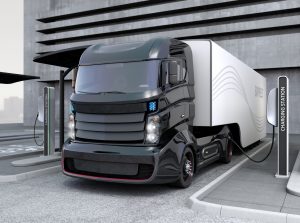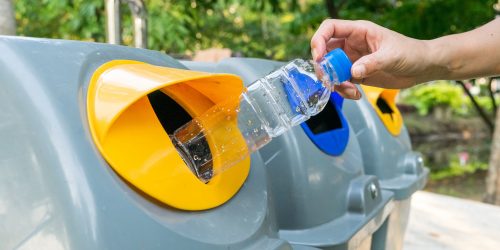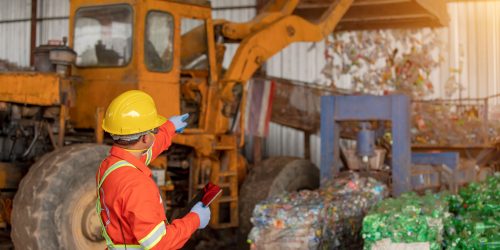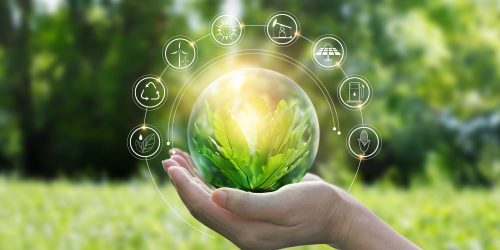What is the future of green transport in the supply chain?

Protecting natural resources and reducing pollution: Environmental concerns are at the centre of every conversation these days. The global stakes are changing, and companies need to adapt to the new world that is taking shape. The supply chain is no exception to this rule. It must change too, seeking alternative solutions that are better for the planet. Which sustainable transport options will the supply chain use in the future?
The stakes are changing and the supply chain must keep up
In a globalised world, it is simple to get a product from the other side of the world at a low price. But there is a hidden cost to this simplicity. Freight transport has a major impact on the environment. CO2 emissions play a major role in this. This impact comes from:
- Pollution from vehicles;
- A large number of trips;
- A lack of transport optimisation.
However, customer expectations are very high. They want faster delivery times and cheaper, higher-quality products.
How can customer satisfaction be reconciled with a green supply chain? Technology is improving, and the green transportation of the future is slowly being invented.
A cleaner mode of transport for long distances
Although many people are increasingly looking to buy locally in their daily lives, long-distance freight transport is not about to disappear.
In addition to optimising containers so that they do not travel half-empty, sea freight is taking action to reduce its carbon footprint:
- Reducing the sulphur content in the fuel used;
- Travelling at a lower speed;
- Using biofuels (waste oils, algae, forestry residues, etc.);
- Providing electric power to piers to prevent merchant ships from continuing to burn fuel oil while docked.
On land, billionaire Elon Musk is promising a supersonic train capable of travelling at over 1,000 km/h: the Hyperloop. This project could revolutionise long-distance freight transport. The Hyperloop is a capsule that is propelled by a magnetic field, travelling inside an airless tube. This means that there is no friction to slow down the trains. This leads to lower energy costs and the guarantee that goods can be shipped in record time.
Autonomous cars are the future of supply chain transport
Autonomous vehicles are in a pole position to be a future solution for travel in general, as well as for supply chain travel. Its main benefits are a non-polluting electric engine and a smooth driving experience that reduces the need for energy-intensive acceleration and braking.
The increased use of this green mode of transport has an impact on both long-distance and last-mile delivery. Trains, shuttles, trucks, cars: a wide range of autonomous vehicles is beginning to emerge.
Even ships will soon have their own autopilot. Two projects for electric and autonomous cargo ships are currently being tested: One is set to be launched in 2022 in Norway, and the other in Japan.
Green transport for short supply chain journeys
The environmental cost of last-mile logistics is now well known. Delivery to the final recipient, even if the address is only 2 km from the factory or warehouse, generates a lot of pollution and is harmful to the planet. The CO2 emissions caused by the influx of motorised vehicles into the city centre make the final link a weak one.
The last mile is a real environmental challenge that the Green Supply Chain must meet. In order to overcome this obstacle, a number of future transport solutions are being developed. The aim is to relieve congestion in the city and fight pollution.
Of course, the electric and autonomous vehicles mentioned above are key solutions. Autonomous shuttles are starting to be developed. Walmart, the American hypermarket chain, is currently using them. But these are not the only possible ecological solutions.
For short distances and light parcels, drones are an efficient and environmentally friendly alternative. In the coming years, it is likely that flying robots that can carry heavier and bulkier products will be developed.
But robots don’t just fly through the air. Autonomous trolleys are also being developed. These GPS-enabled rolling robots can deliver parcels to their recipients all on their own. Because of their design, they are best used for deliveries in cities.
Similarly, semi-autonomous tracking trolleys support delivery drivers during their rounds. Instead of driving a car, they can make deliveries while walking, followed by their assistant. These battery-powered robots help to reduce greenhouse gas emissions and noise pollution in cities.
Smarter management of transportation for a greener supply chain
For the transport of the future to be more environmentally friendly, technological innovations in vehicles are not enough. It is necessary to go further and really concentrate on itineraries. What is an electric, autonomous, zero CO2-emission bus missing? A well-thought-out and optimised route.
This is where management, planning and dispatch analysis software plays an important role. Goods are loaded based on the route and the planned stops. The way the goods are organised is also calculated in order to be optimised: the first items to be delivered are loaded last, and vice versa. This increases delivery speed.
Transport optimisation is a complement to intelligent warehouses, which is the first step.
Ecology at the heart of transport in 2050
Today’s issues are not the same as they were 30 years ago. In recent years, innovative transport solutions have emerged that point to a greener future. Thanks to these major breakthroughs, what is currently only the start of a technological revolution will become a highly sophisticated system by 2050. New possibilities will continue to arise. Robotics and artificial intelligence are an integral part of this change.
On the road to greener consumption, production and supply, the supply chain must change and adapt. When everyone contributes to this shared goal, the future can be greener.






